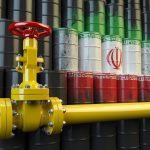by Sara Vakhshouri
The nearly 50-percent plunge in global oil prices since June 2014 has provoked a variety of analysis and speculation. Some see the hand of Saudi Arabia behind this drop, as part of an effort to squeeze Iran, its regional rival, at a particularly vulnerable moment. For others, lower oil prices have been an anticipated holiday gift for U.S. consumers, leaving them with an average of an extra $10 in pocket money per month. For still others, policymakers in oil-dependent economies, such as Iran’s, are nervously bracing for tighter economic situations, likely to include higher taxes and fuel prices for their citizens, and hoping such measures can pull their budgets out of the red in 2015.
The recent price decline has unquestionably hurt oil-dependent economies, particularly those with large populations such as Algeria, Iraq, Nigeria, Russia, Venezuela and Iran. The situation is especially problematic given that most of these countries’ national budgets are drafted on a “break-even” oil price of over $100 per barrel. But if we look at this phenomenon through a geopolitical lens and link it to Saudi Arabia’s short-term regional strategic interests, only one conclusion seems possible: a Riyadh-Washington conspiracy in which the Saudis have either acquiesced to or colluded with a U.S. strategy to exert unprecedented fiscal pressure on Iran and Russia, in particular.
In fact, this is a rather shortsighted analysis, one that more conveniently fits political science models as opposed to rigorous empirical scrutiny. The reality is far more complex and nuanced than armchair geo-strategists would allow. The Saudis are certainly great chess players. They know how to achieve simultaneously their market and geopolitical objectives with a single sweep in the oil market, effectively killing two birds with one stone. Yet the reality of the markets and basic laws of economics are what are truly at work here. Indeed, simple market fundamentals of supply and demand bear the greatest responsibility for the price plunge we have seen.
A brief look at the growth in oil supply versus the growth in demand over the past year illustrates this point. In 2014, U.S. supply growth was about 1.2 million barrels a day (mb/d). According to the U.S. Energy Information Administration (EIA), U.S. crude oil production in 2014 reached 8.6 mb/d, up from 7.4 mb/d in 2013; it is expected to reach 9.3 mb/d in 2015. On the other hand, global demand for oil in 2014 grew by only 900,000 barrels per day (according to the International Energy Agency), largely due to higher overall efficiencies coupled with lower economic growth in China and the continuing economic malaise in the European Union.
Technological innovations and the recent shale revolution in North America have profoundly altered the global energy landscape. Since the 1970s, the United States was seen as a major market for foreign oil and gas exporters. Yet before the recent drop in oil prices, the EIA’s annual energy outlook predicted that total U.S. oil production by 2016 would reach a high of 9.6 million barrels a day, which it last achieved in 1970. It was also expected that U.S. shale (or tight) oil production would surge to five million barrels per day by 2017. If we put ourselves in Saudi shoes, planning and implementing a long-term oil strategy, when that commodity accounts for 90 percent of the kingdom’s revenue, is completely rational.
If we probe further, preventing U.S. shale oil production and investment in non-conventional oil production is more vital for Saudi Arabia in the long term than the short-term cost of reduced prices. The same applies to the country’s allies in the Gulf Cooperation Council (GCC), as well as OPEC members more generally. Simply put, market strategies win out over geopolitical ones. In other words, Riyadh doesn’t need to risk its own economy and those of its allies in OPEC and GCC just to weaken Iran, which, in any case, is already struggling under the international sanctions regime. Rather, Saudi Arabia’s main goal in reducing prices is to secure its market share.
Many argue that the Saudis could wait to pursue this goal until early 2020, when the market expects U.S. shale oil production to start leveling off as a result of the inherently low efficiency of unconventional oil wells. From the Saudi and OPEC viewpoints, however, it is important to take the initiative and secure potential future market shares by reducing oil prices across the board now. Oil production from most U.S. shale formations will not be economically beneficial when prices fall below $60 to $70 per barrel. (Oil prices fell a further three percent Tuesday to their lowest point in five years, at under $52 per barrel.) This is why most OPEC members have agreed to take the loss resulting from lower oil prices in the short term and, by doing so, securing their market share in the long term. This decision had little to do with geopolitics and much more to do with market dynamics.
Impact on Iran
Of course, the view could be seen much differently by Iran, whose oil exports have been severely constrained by international sanctions since 2011. In order to reduce the fiscal deficit resulting from the decline in oil revenue, the Rouhani administration has had to increase customs and taxes for next year’s budget, starting March 2015. Government policymakers are also counting on savings produced by the next round of cuts in domestic fuel subsidies, presuming Iran’s currency value doesn’t drop more. With Iran having to deal with the combination of low oil prices and the impact of sanctions, its short-term future looks very gloomy indeed.
But lower oil prices today could provide an opportunity for Iran to regain its lost market share in the medium to long term. More than half of Iran’s export capacity was wiped out due to sanctions after 2011. What with the anticipated growth in overall oil supplies from unconventional sources – as well as from Iraq, whose production was expected to increase rapidly with the signing of major contracts with Western oil companies, at least before the Islamic State’s big offensive – the market neither wanted nor needed a flood of Iranian crude. But if current low oil prices persist over the next two years and unconventional oil production declines, Iranian oil will be poised to take up the slack, particularly if Tehran reaches an agreement with the P5+1 on its nuclear program. However, it would take a year or two before Iran could increase its oil production to anywhere near pre-sanctions levels.
If indeed a nuclear agreement is reached, Tehran, which has issued new investment rules for its energy sector, would be well placed to attract international oil companies. This is particularly so at a moment when the investment in high-cost oil projects, such as U.S. shale oil, will look increasingly unappealing. Further, if insecurity persists in neighboring Iraq, investors may find Iran even more enticing.
Impact on the United States
As mentioned earlier, lower oil prices have been a boon to U.S. consumers, not only at their local gas station but in other economic sectors as well. There will be a dark side to this dynamic, however. The economies and job markets in oil-producing states like Texas and North Dakota will be badly squeezed. In an interview with The Wall Street Journal, Tom Runiewicz, an IHS Global Insight economist, predicted that 40,000 jobs could be cut by firms that provide services to shale oil-production projects if oil prices settle at around $56 per barrel by the end of this year.
Indeed, even oil prices below $70 per barrel would have devastating consequences for shale oil investment and production in the United States. Again, this is particularly the case due to the inherently low efficiency of shale oil wells, which reach their peak production at very early stages of production and require constant drilling of new wells to maintain production levels.
Impact on Other High-Cost Oil Producers
In theory, low oil prices could persist for another year or two, until the production of higher-cost oil is significantly reduced. High-cost oil production from shale resources was initially expected to fundamentally alter market dynamics. But the longer oil prices remain low, the more significant their impact will be relatively inefficient oil resources, notably North Sea oil. North Sea wells are quite mature, and their production not terribly efficient. Further investment and development projects in that region could be squeezed or cut altogether by lower Brent crude oil prices, especially prices below $70 per barrel.
Predicting the Future
In short, the big decline in oil prices over the past year has created a pivotal moment that favors more-efficient and lower-cost oil production, and works against high-cost oil production from shale formations or less-efficient production in the North Sea. However, predictions are always hazardous. There are other scenarios that could alter our calculations.
The current ‘gloomy’ scenario for shale oil production could change if more-efficient technologies and methods are developed. Obviously, U.S. firms and investors have poured massive amounts of investment and knowledge into securing such unconventional resources. Oil independence is also very important for U.S. policymakers, and the role of U.S. shale oil in preventing price shocks has been an important card in Washington’s hand for several years. Therefore, it is possible that the dour forecasts for U.S. shale oil production will not hold up.
We could also envision a scenario in which the governments of some big oil producers find themselves unable to cope with domestic unrest arising from budgetary shortfalls. The result could be major disruptions in the supply of oil on the world market. We may yearn for a crystal ball, but the best we get is a cloudy windshield.






Nice in depth article. First off, Saudi is acting without any USG pushback. If Riyadh was told to knock it off, they would. To deny that US has a position on this is to ignore reality. US is tightly knit with all of the satellite states in the region. This being the case, they must see an upside to Saudi actions, and must be ignoring(no surprise there), or hedging the impact to US oil markets.
The lowest common denominator? Russia, Syria, Iran, and pipelines.
First lets look at Russia. The ruble has lost half its value on the year, with the vast majority happening in Oct, when Saudi shocked everyone with its policy. Saudi has a vested interest in deposing the Assad regime. Not just because of ideological reasons, but more importantly because of Assad’s pledge to Russia that it would oppose a qatar-Saudi-syrian-Turkish pipeline, that had been in the works up until 2011. We now have a Russian pipeline being built to turkey to provide oil that would have come from Qatar and Saudi.
Then there is Iran, not only ideologically and fundamentally opposed in religious terms, but have been competing for influence in the region since before Bagdad was given to Iran by G.W. They also had a pipeline in the works, construction of which has been essentially halted due to conflict regarding the Islamic state(which Saudi aristocrats as well as Riyadh have been bank rolling since 2011). Now you couple that with US and Iran cozying up to each other concerning the Islamic state and possible nuclear deal ending sanctions? Can you say jealous girlfriend?
Then there is the US, who have all but stopped supporting any serious policy for regime change in Syria, cozying up to Iran, and has proven itself to be a complete ignoramus when it comes to any coherent policymaking. The US is like a first time chess player who knows what all the pieces do and that’s it. Every move is a guess, and Saudi isn’t oblivious. They know that they are going to need to drop the US at some point and now that the US can’t seem to support Riyadh’s end goal, it is probably time to start making other arrangements for how they are going to approach internationally policy and global oil markets in the future. Luckily, US officials are so damn stupid, and US foreign policy is so damned schizophrenic that Kerry and Obama aren’t even noticing that they are more than likely presiding over the end of an empire.
Which brings me to my final point, which is that I am leaving out 1 possibility. I suppose it could be possible that Washington sees its empire crumbling before its eyes, and will be moving towards an assertion over the last vestige of its global hegemony, its military might. If that is the case, it may be just as well that the collapse comes now while Putin is a villain in the eyes of the american public. I contented however, that that is giving the global economic system too little credit, and the policy makers in Washington too much. The reality is, despite what Schiff, Rickards, and the others are saying, the US dollar is too deeply entrenched in foreign economies for the final nail to be anywhere close to being drivin in. The fed can print ad infinitum, at least for another few years before china, India, and the BRICS to dump it for gold. Collapse is coming either way. With 137 billion in foreign reserves sitting all alone in the us vaults, while 10 trillion in dollar denominated assets are waiting to come home, it’s not a couple of billion a year in freshly printed dollars that’s going to drive inflation, its gonna be when foreign vaults start liquidating american junk.
Interesting post. Let’s see how long the price will drop and whether or not it levels out.
Lower oil price is not good for the industry, but the general public will have more real income because of lower transportation costs, so the economy and employment should increase.
It doesn’t make any mathematical sense to argue that Saudi gains anything by low pieces over short or long term . They do have competitions even at low price . They don’t have unlimited supply to keep shale gas off the market .so when shale gas comes ( as regular oil dwindles in supply ) ,Saudi won’t have enough oil anymore to play and by that time they have lost a lot of money.
With low demand and increased efficiency one can expect low prices but not this low!
The Saudis don’t have enough oil to shut down shale? Are you being serious? The Saudi’s are sitting on more reserves than every US drilling operation combined, and the Saudis can extract them nearly for free compared to US operations. Shale frackers are literally trying to squeeze oil from a stone while the OPEC nations sit on 80+% of the world’s oil reserves. They can shut down shale 100x over. This article is absurd. Low oil is hurting the US as much as anyone else – it’ll be killing the US when all these highly leveraged fracking companies start default on their bond obligations as well. We’re already seeing shut downs of marginal drilling in the US with much more to come. We have poorly run “red” states that have put all their eggs into the oil basket and their “gold rush” fortunes are about to implode. To attempt to play this off as a US/Saudi conspiracy against the Russian is incredibly naive to the how this is affecting the US.